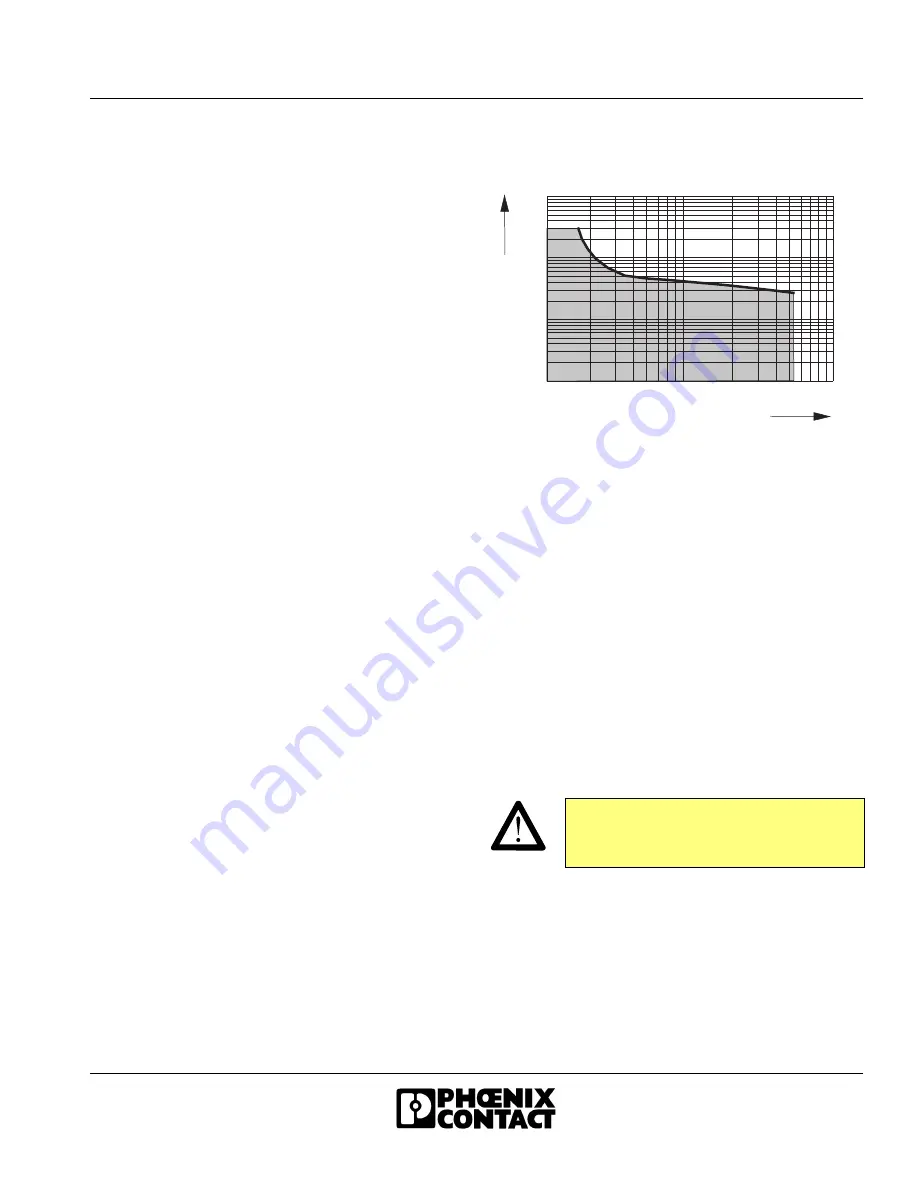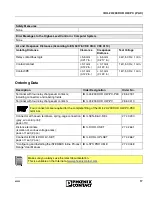
IB IL 24/230 DOR 4/W-PC (-PAC)
6530B
11
Switching AC/DC Loads
Switching Large AC Loads
When switching large AC loads, the relay can be
operated up to the corresponding maximum values for
switching voltage, current, and power. The arc that
occurs during shutdown depends on the current,
voltage, and phase angle. This shutdown arc switches
off automatically the next time the load current passes
through zero.
In applications with an inductive load, an effective
protective circuit must be provided, otherwise the life
of the system will be reduced considerably.
To prolong the life of the IB IL 24/230 DOR 4/W-PC
terminal as mush as possible when using lamp loads
or capacitive loads, the current peak must not exceed
6 A when the load is switched on.
Switching Large DC Loads
In DC operation, a relay can only switch a relatively
low current compared with the maximum permissible
alternating current. This maximum direct current value
is also highly dependent on the voltage and is
determined in part by design conditions, such as the
contact distance and contact opening speed.
The corresponding current and voltage values are
shown in Figure 9.
Figure 9
DC load limiting curve
(REL-SNR-1XU/G 5 GOLD relay)
An unattenuated inductive load further reduces the
values given here for switching currents. The energy
stored in the inductivity can cause an arc to occur
which forwards the current via the open contacts.
Using an effective contact protective circuit in relay
contacts with the same life enables you to switch
currents that are virtually the same as with ohmic
loads.
Additional technical data is available on request.
I
Switching current in A
U
Switching voltage in V
Definition of the load limiting curve: For 1000 cycles,
no constant arc should occur with a burning life
> 10 ms.
If it is permitted to switch higher DC loads,
several relay contacts can be switched
in parallel.
1
1 0
1 0 0
1 0 0 0
V
U
I
0 . 1
1
1 0
5 6 6 3 A 0 1 3
A




































